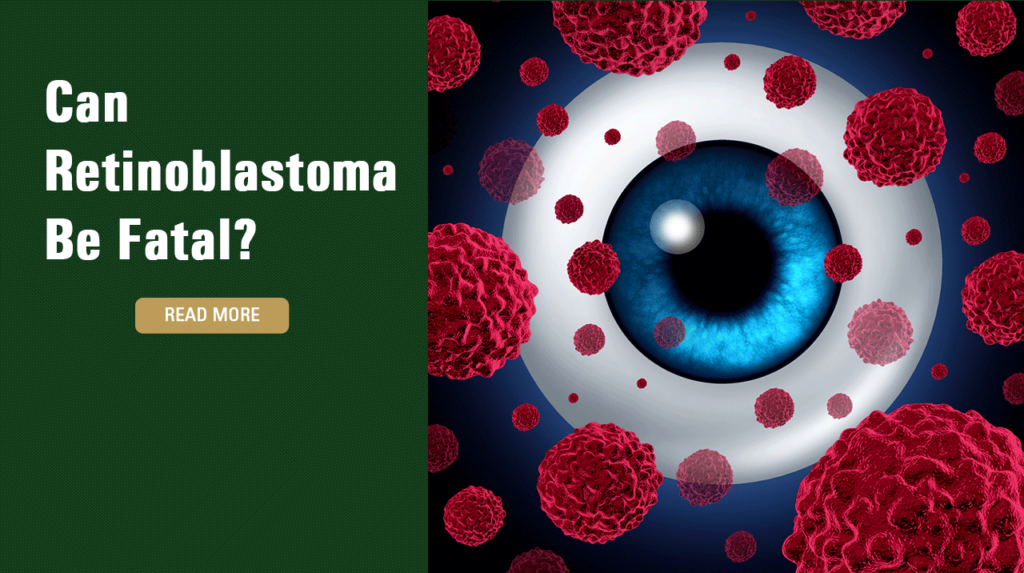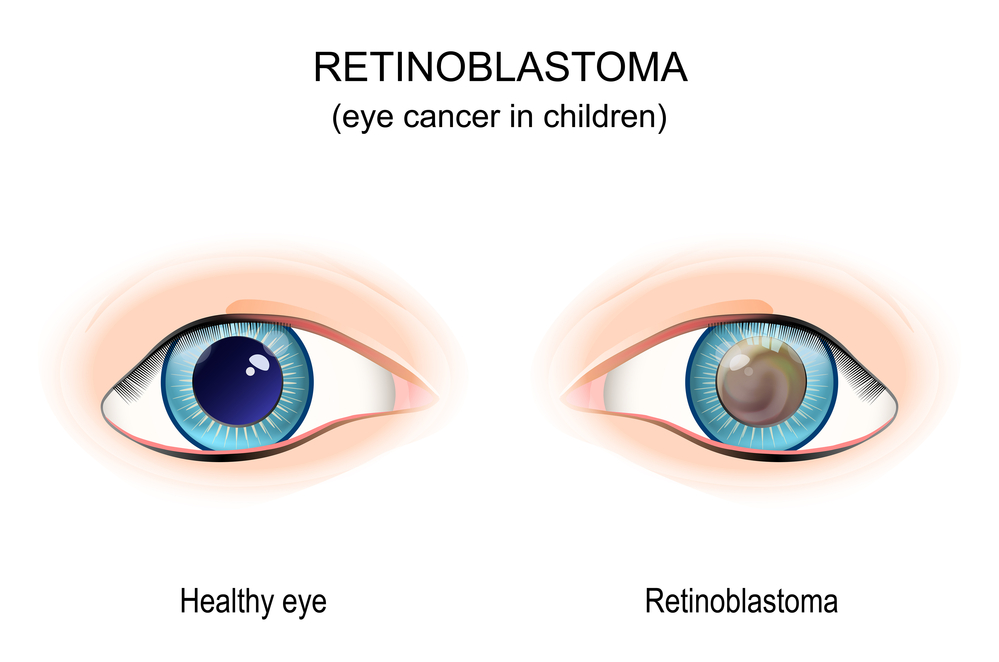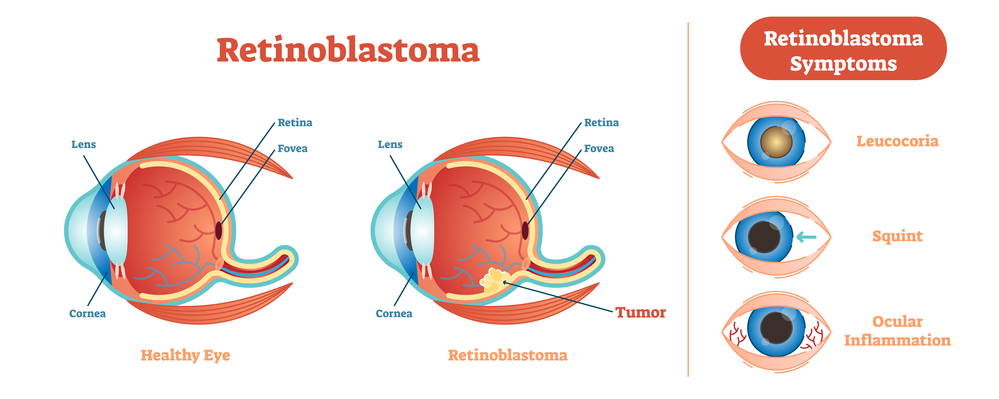Can Retinoblastoma Be Fatal?

Learning that your child has retinoblastoma can be devastating. You might be worried that your child could die, might be left with permanent blindness in one or both eyes, or potentially lose an eye. Once the shock of the diagnosis recedes, you might wonder whether you could have legal recourse for your child’s diagnosis and the losses your family might suffer. While retinoblastoma itself is generally not caused by medical negligence, a doctor’s failure to promptly diagnose and treat the condition when it is still in an early phase could amount to medical malpractice in some cases. Talking to a malpractice lawyer might help you find peace of mind that you have done everything you can to try to protect your child. If you have a viable malpractice claim, recovering compensation can help to ease the financial strain your family might face because of your child’s diagnosis and help to ensure their future is protected. Here is some information about pediatric retinoblastoma from the attorneys at Raynes & Lawn.
What Is Retinoblastoma?
Retinoblastoma is a rare cancer of the eyes that typically develops in children under the age of five. This cancer develops in the retina of the eye, which is located in the back of the eye and is comprised of tissues that detect color and light. Many children who are diagnosed with retinoblastoma only experience cancer affecting one eye. However, 33% with this cancer develop it in both eyes.

Symptoms and Signs of Retinoblastoma
Many children with retinoblastoma only have cancer affecting one eye. The most common early sign of retinoblastoma is a visible white area in the pupil called leukocoria or cat’s eye reflex. This white area is more noticeable when the light is dim or in a picture taken with a flash. Other symptoms and signs of retinoblastoma include the following:
- Crossed eyes
- Eyes not pointing in the same direction (strabismus)
- Squinting
- Changes in the color of the iris
- Red eye or eyes
- Swelling and soreness of the eyelids
- Poor vision/blindness of the affected eye
When retinoblastoma is diagnosed early, it is frequently curable. However, if it is not promptly diagnosed and treated, retinoblastoma can spread to other areas of the body. Advanced retinoblastoma can be fatal.
Causes of Retinoblastoma
Most cases of retinoblastoma are caused by mutations in a tumor suppressor gene called the RBI gene. This gene is responsible for regulating cellular growth and stopping cells from dividing uncontrollably or too rapidly. Most RBI gene mutations keep it from producing functional proteins, making cells that are unable to effectively regulate cellular division. This can cause cells in the retina to uncontrollably divide and form a malignant tumor. Other genetic changes can also cause variations in how people develop and grow the tumors and might also result in the development of other types of tumors.
Some children who develop retinoblastoma have deletions on chromosome 13, which is the chromosome that includes the RBI gene. Because several genes located on chromosome 13 can be affected, children with these deletions might also have slowed growth, intellectual disabilities, and distinctive features, including a short nose, ear abnormalities, a broad nasal bridge, and prominent eyebrows.
When a child’s retinoblastoma is associated with a genetic mutation that appears in all of their cells, the cancer is known as germinal or hereditary retinoblastoma. Children with this type of retinoblastoma typically have cancer affecting both eyes and have an increased risk of developing other types of cancer in other areas of the body. These children are especially at risk of developing pineoblastoma, which is cancer of the pineal gland in the brain. Other types of cancer for which children with germinal retinoblastoma have a higher risk of developing include osteosarcoma, which is a cancer of the bones, soft tissue sarcomas, which are cancers of the muscles and other tissues, and melanomas, which are aggressive forms of skin cancer.

Prevalence of Retinoblastoma
Between 200 to 300 children in the U.S. are diagnosed with retinoblastoma each year. The condition accounts for 2% of all of the types of cancer that are diagnosed in children younger than age 15. However, a majority of children diagnosed with retinoblastoma are diagnosed before the age of five with an average age of 2. Boys and girls are equally affected, and there are no racial or ethnic differences in the diagnostic rates. Both eyes are equally likely to be diagnosed with retinoblastoma, and around a quarter of children will suffer the disease in both of their eyes. In children with retinoblastoma in both eyes, between 20% to 30% will lose their eyes.
The five-year survival rate for children with retinoblastoma, which means the percentage of children who will live at least five years post-diagnosis, is 96%. The likelihood of survival depends on multiple factors, including whether the cancer is caught early or whether it has metastasized to other areas of the body.
Medical Malpractice and Retinoblastomas
When a child develops retinoblastoma that is not promptly diagnosed and treated, it can place the child at severe risk. In some cases, a doctor might negligently fail to diagnose retinoblastoma when it is in an early stage, allowing the condition to worsen and spread and leaving the child with a poorer prognosis. Children whose retinoblastoma are not properly diagnosed and treated might suffer adverse outcomes that wouldn’t have occurred if they had been timely diagnosed and properly treated. When a doctor’s failure to diagnose and treat retinoblastoma results in a worsened outcome and complications, the doctor’s negligence might rise to the level of medical malpractice and form the basis of a viable claim.
Some examples of medical negligence in pediatric retinoblastoma cases are detailed below.
Misdiagnosis
Misdiagnosis happens when a doctor examines a child and diagnoses a different condition other than retinoblastoma. This can occur because of medical negligence and can result in the child receiving treatment for the wrong condition while not receiving timely treatment for retinoblastoma.
Failure to Diagnose
A failure to diagnose retinoblastoma occurs when a doctor doesn’t diagnose the condition. In many cases, the families won’t receive the proper diagnosis until their children’s symptoms are so serious that they seek out the opinion of a different doctor. By that time, the children’s conditions might have progressed to the point at which cancer has metastasized throughout the body.
Delayed Diagnosis
In some cases, a child’s doctor might not diagnose them with retinoblastoma as early as they should. A delayed diagnosis can be dangerous because of the resulting treatment delay, which might result in partial blindness, total blindness, or eye loss.
What Can an Attorney Do?
If your child has been diagnosed with pediatric retinoblastoma that is fairly advanced, you might want to consult an experienced medical malpractice attorney to determine whether the delay in diagnosis, failure to diagnose, or misdiagnosis might have resulted from medical negligence. An attorney at Raynes & Lawn can review your case and help you understand its merits. These types of cases are complex, making it important to hire a lawyer with substantial experience and a successful track record of helping other families recover compensation in retinoblastoma malpractice lawsuits.
Before your attorney will file a lawsuit, they will work to gather evidence and will consult a medical expert. Some of the types of evidence your lawyer might collect include the following:
- Medical documentation and evidence of the allegedly negligent medical incident
- Your child’s medical records and bills
- Statements from all of the parties involved, including you, your family, your child, the doctor, and other healthcare professionals
- Relevant research about retinoblastomas, industry treatment standards, and relevant negligence laws in Pennsylvania
Under Pennsylvania law, plaintiffs must file a certificate that their claims have been reviewed by medical experts when they file complaints. The medical expert will determine the relevant standard of care expected of competent doctors in the same practice field and geographic area under the treatment conditions and compare it with the treatment provided by your child’s doctor. If the expert determines that the doctor’s care deviated from the standard of care, they will then work with your attorney to determine if the substandard care your child received caused their condition to worsen and resulted in harm and damages.
Proving Medical Malpractice in a Retinoblastoma Case
Medical malpractice claims involving retinoblastoma can be complex since the condition itself typically results from genetic factors instead of birth injuries. Your attorney will need to gather sufficient evidence to prove each of the following elements of medical malpractice by a preponderance of the evidence:
- Creation of a doctor-patient relationship between the defendant and your child
- The relevant medical standard of care that applies to the treatment conditions
- The deviation of the doctor’s treatment from the expected standard of care
- Causation of your child’s worsened condition or complications by the doctor’s substandard treatment
- Resulting calculable damages
You will be required to meet your burden of proof for each of these elements. If you fail to prove one, you won’t win your lawsuit. For this reason, our attorneys extensively investigate claims involving pediatric retinoblastoma and work closely with medical experts to gather critical evidence in support of our clients’ claims. In many cases, we can successfully negotiate fair settlements in favor of our clients. However, we are prepared to litigate cases on behalf of our clients through the formal litigation process in court, up to and including a trial before a jury or judge.
Statute of Limitations
It is always important to seek the help of an attorney as soon as possible after you learn about your child’s diagnosis. Retaining a malpractice lawyer quickly can help your attorney find evidence to support your case before it is lost or spoliated. When you hire an attorney early, your lawyer will also have more time to thoroughly investigate and build your case to make it stronger.
Another good reason to contact an attorney quickly is Pennsylvania’s statute of limitations. This law establishes a deadline for filing a malpractice claim and is found in 42 Pa.C.S. 5524. Under this law, the general statute of limitations for medical malpractice claims is two years.
However, Pennsylvania allows an exception to the statute of limitations known as the discovery rule. In Dalrymple v. Brown, 549 Pa. 217 (1997), the Pennsylvania Supreme Court held that when a plaintiff is unaware of an injury’s existence or reasonably could not have known about its existence, the statute of limitations will be tolled until the date of discovery or the date the injury should reasonably have been discovered. In the context of retinoblastoma, this would be the date the plaintiff learned or should have discovered that the doctor’s negligent act occurred.
For example, if your child’s doctor failed to diagnose your child’s retinoblastoma, and your child’s condition worsened and caused you to seek out a second opinion, the statute of limitations should be tolled until the time you received the diagnosis from the second doctor. You would then have two years from that date to file a lawsuit.
Pennsylvania used to have a statute of repose that prevented people from filing lawsuits when seven years had passed from the date of the negligent act regardless of the discovery rule. However, the Pennsylvania Supreme Court held that the state’s statute of repose was unconstitutional in Yanakos v. UPMC, 218 A.3d 1214 (2019). This means there is no longer an upper limit of time for filing a medical malpractice lawsuit when the negligence was not discovered and could not reasonably have been discovered before seven years had passed.
However, if you should have discovered the doctor’s negligence and failed to act by filing a lawsuit, you will lose your ability to file a claim if the statute of limitations has passed. Your child will then be able to file a lawsuit after they turn 18 as long as they do so within two years or by their 20th birthday.
The best option to avoid potential statute of limitations problems is to get help from an attorney immediately once you learn about your child’s diagnosis and suspect that your doctor’s negligence might have resulted in a delay in treatment.
Potential Compensation
The compensation that you might be able to recover in a medical malpractice lawsuit for your child’s retinoblastoma will vary based on the facts and circumstances, including the severity of your child’s condition, their likelihood of fully recovering, the actions of the involved doctor and other medical professionals, and other factors.
Compensation in a medical malpractice lawsuit generally involves monetary awards for economic and non-economic losses you have suffered, which are called compensatory damages. The following types of compensatory damages might be available:
- Your child’s past and future medical expenses to treat their retinoblastoma and associated complications
- Funeral and burial costs if your child succumbs to their condition
- Your child’s resulting physical pain and suffering caused by the delayed treatment and diagnosis
- Emotional distress
- Disfigurement/scarring
- Disability
- Reduction in the ability to enjoy life
- Other damages
Pennsylvania does not place a limit on the amount that can be recovered in compensatory damages.
Depending on the actions of the doctor, punitive damages might be recovered in rare cases. These are damages that a court can award to punish a defendant whose behavior was especially egregious. If punitive damages are awarded, they are ordered in addition to any compensatory damages you might receive. However, they are capped at 200% of your economic damages.
Consult an Experienced Philadelphia Medical Malpractice Attorney
If your child has been diagnosed with retinoblastoma, and you suspect that your doctor’s negligence might have resulted in a late diagnosis and your child’s advanced cancer, you should speak to an attorney at Raynes & Lawn as soon as possible. We can review your case and consult a medical expert to determine whether a malpractice claim might be warranted. Call our law firm today to schedule a free consultation at 1-800-535-1797.
For the general public: This Blog/Website is made available by the law firm publisher, Raynes & Lawn, for educational purposes. It provides general information and a general understanding of the law but does not provide specific legal advice. By using this site, commenting on posts, or sending inquiries through the site or contact email, you confirm that there is no attorney-client relationship between you and the Blog/Website publisher. The Blog/Website should not be used as a substitute for competent legal advice from a licensed attorney in your jurisdiction.
For attorneys: This Blog/Website is informational in nature and is not a substitute for legal research or a consultation on specific matters pertaining to your clients. Due to the dynamic nature of legal doctrines, what might be accurate one day may be inaccurate the next. As such, the contents of this blog must not be relied upon as a basis for arguments to a court or for your advice to clients without, again, further research or a consultation with our professionals.
